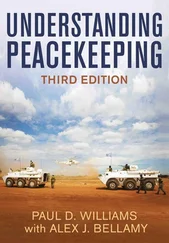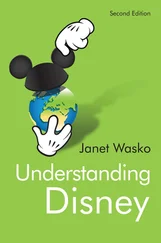Emily Brontë also very likely lived a life devoid of sexual liaisons; indeed, she also probably died a virgin. However, if she was asexual, she likely was not aromantic (see chapter 2 for distinction between sex and romance), or at least she had a high-level understanding of romance, as she wrote one of the most intensely romantic novels of her time, Wuthering Heights . Thus, did she eschew the company of men for sexual reasons, but not necessarily for romantic reasons? Or did she perhaps have a special insight into the world of romance because she was an outsider (asexual/aromantic), as well as a keen observer of humanity? The novelist Stevie Davies (2004) argues that Brontë may have been sexual in some form (e.g., masturbated), and may have had sexual attraction, but this was not overtly expressed in her lifetime because it was directed toward women. Of course, as is the case with Newton, the assertion that Brontë had an atypical sexual orientation, either an asexual or same-sex one, is based on limited evidence.
It is interesting to speculate on whether some individuals who may have been asexual in the past—that is, experiencing no sexual attraction or no desire for any sexual activity—may have been sexual if they had lived in contemporary Western society. This assumes of course that environmental and cultural factors play some role in sexualizing individuals (see chapter 13), and that these factors are (more) prevalent in modern Western society relative to other time periods and societies. For example, there is some evidence that, at least up until recently, there may have been more asexuals, broadly defined, in China than in the West (see chapter 4), and that this may reflect more restrictive sexual norms in that society. Thus, could the social environment of the Victorian era in England have contributed to Emily Brontë’s asexuality (if she was in fact asexual)? And if so, had she lived in modern Western society, and was exposed in childhood and adolescence to its sexualizing influences, such as Lady Gaga videos, would she have developed into a sexual person? Of course, we also have to recognize that some people with strong predispositions to be asexual, because of the prenatal influences mentioned above, may be immune to such forces. But it is worth considering how cultural forces, as they have changed over time, can contribute to the sexualization, or the lack of it, of individuals.
As we move into very recent history, the evidence for the existence of asexual people becomes more solid. This is because the modern age of communication provides a rich source of information on people’s lives, including recordings of individuals talking candidly about their sexual feelings.
Paul Erdos, one of the most famous mathematicians of recent history, was asexual (NNDB.com, 2011). Like Newton, he was profoundly preoccupied with his science. One of his biographies is aptly named The Man Who Loved Only Numbers (Hoffman, 1998) . Erdos spoke about how deeply moved he was by mathematics, and his aesthetic appreciation of it over all other things, including (presumably) people: “If numbers aren’t beautiful, I don’t know what is” (Schechter, 1998, p. 7). He also spoke about his lack of sexual interest: “I can’t stand sexual pleasure” (Csicsery, 1993). It is not known whether this statement refers to a general disinterest in all aspects of sexuality—attraction, desire, arousal—or just the arousal/pleasure component, but it is clear that Erdos did not seek out the intimate company of others. Moreover, given that his aesthetic interests seemed primarily limited to mathematics, he likely did not have a deep sexual (or even romantic) attraction to other people (see also chapter 12).
Throughout history, artists have produced figures in paintings and sculptures and portrayed characters in fiction that project an asexual aura. Not only do such depictions reflect the artist’s sensitivity to existing human variability—a variability that the audience can understand and respond to—but they also serve two dramatic functions: first, to emphasize a value that the artist or his or her patron holds dear, and second, to increase the conflict or tension that makes storytelling work.
As an example of the former, an asexual portrayal may serve to reinforce the notion that a character is immune to worldly temptations, or perhaps is completely consumed or driven by one goal and motive. So, the portrayal of a character may de-emphasize secondary sex characteristics (e.g., women’s breasts), or perhaps present them in an androgynous manner. The Virgin Mary, saints, and angels have often been portrayed in this way throughout the history of European Christian art.
It was also for this reason that Arthur Conan Doyle gave his fictional character, Sherlock Holmes, an asexual aura: to portray his character as being driven by intellect. Interest in the flesh could potentially compromise Holmes’s power of reasoning. Indeed, Holmes is presented as being above (or somewhat immune to) most other pleasures of the body, including eating. In Watson’s words: “It was one of his peculiarities that in his more intense moments he would permit himself no food, and I have known him to presume upon his iron strength until he has fainted from pure inanition” (Doyle, 2003, p. 32).
The second reason for portraying asexual characters—to increase tension and conflict in drama—is something artists (particularly writers) understand implicitly, as character is often a driving force in storytelling. Indeed, theorists of fiction have pointed out the important role of character in effective storytelling (Morrell, 2006), and human variability (sexual and otherwise) is the raw material for the development and portrayal of character.
Note that I am not merely referring to high art here. Examples of asexual characters (or characters who have an asexual aura) help drive fiction in the popular media, with some of it, of course, far from being considered high art. Indeed, perhaps the most important examples are ones found in the popular media, as those venues have a wide appeal to psychological and social forces common to most, if not all, people.
A prime example of asexuals in low art is the title character in the TV program Gilligan’s Island . This program ran for three years in the late 1960s, but the relatively short stint on TV belies the popularity of this program, as it was very successful in reruns for many years. Thus, it had a large appeal, at least for a segment of the population. Other than the title character, Gilligan, the male characters on this TV program—the Skipper, the Professor, and even Mr. Howell—projected an asexual aura at times, but Gilligan was essentially asexual. Although physically mature, he evinced little sexual desire or attraction.
Why was he portrayed so? The simple answer, I believe, is the writers knew that this type of character portrayal had appeal for preadolescent boys—indeed, a large portion of the audience for this program may have been boys—who could identify with Gilligan, in part because of their own asexuality or, more accurately, presexuality. A sexual Gilligan would not have appealed to their sensibilities, and perhaps even threatened them. Also, his asexuality made good fodder for the type of humor in which this show reveled: One of the female characters, the movie star Ginger, was very sexual, at least for that time in TV-land, and thus her overtures to Gilligan made for comedic tension.
Today there is a character on TV who is Gilligan’s sexual equal: Sheldon, from the popular show The Big Bang Theory . He is, of course, Gilligan’s intellectual superior by light years, an academic nerd of epic proportions, but the humor of this show partly derives from a similar dramatic/comedic tension: the character’s asexuality brushing up against a sexual world.
Читать дальше












